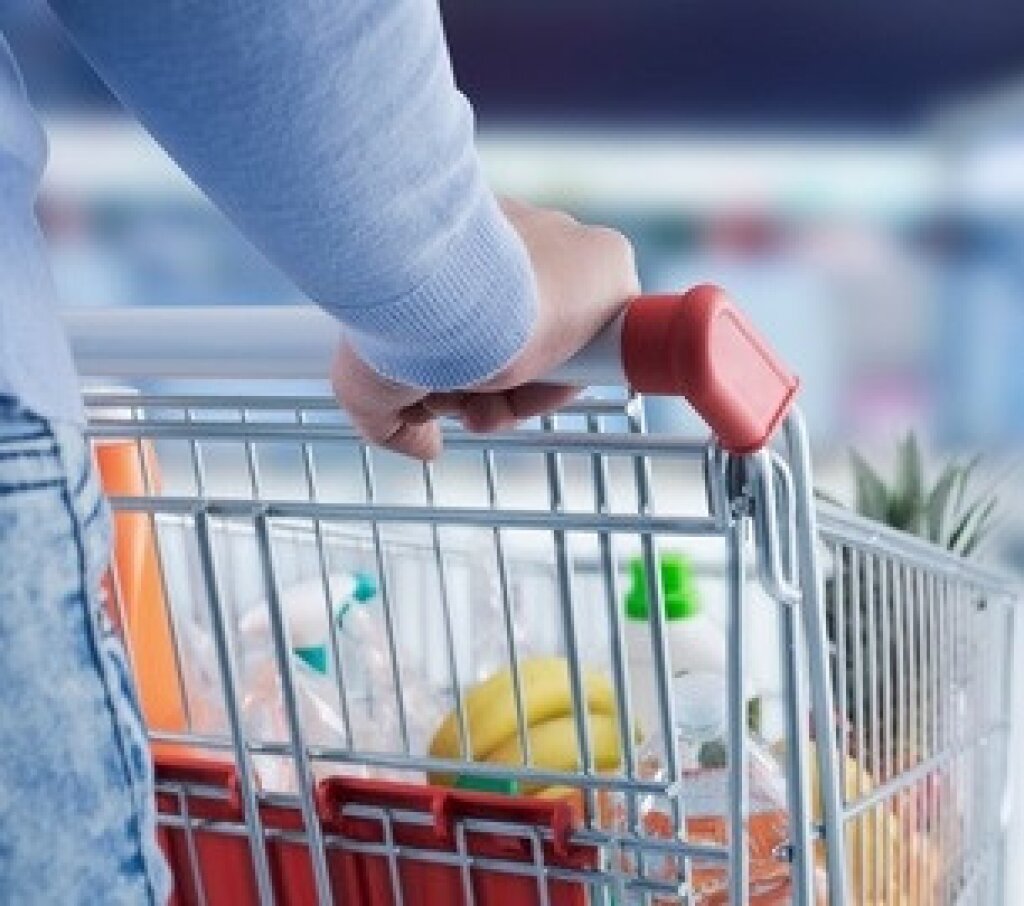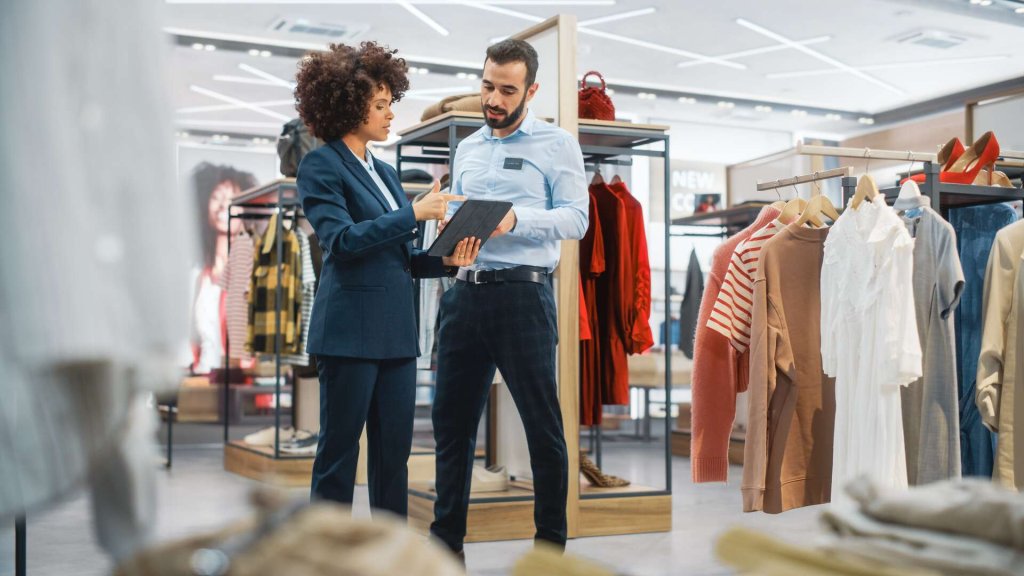Trolley tracking systems
In this article, we examine how and why trolley tracking systems are deployed. Trolley tracking systems are used to reduce theft, improve customer experience and optimise sales, as well as to manage trolley assets. The humble shopping trolley is an essential part of the retail experience and has become sufficiently significance to be tracked by several different types of system.
Are you looking for a trolley tracking system for your retail space?
Get in touch now or explore Facit's Trolley Analytics software.

The benefits of trolley tracking systems
Trolley tracking systems optimise trolley management and provide operational benefits.
Optimise trolley assets, locations, retrieval and use
Enhance customer experience
Reduce theft
Analyse customer behaviour, dwell times, queue times
Monitor trolley maintenance
The invention of the shopping trolley
The shopping trolley, or shopping cart, is a familiar object. We see nested trolleys at supermarkets and in airports. Frequently, lone shopping trolleys are seen abandoned in the street.
Sylvan Goldman introduced the shopping trolley in 1937 in his supermarket chain in Oklahoma in an effort to encourage shoppers to buy more merchandise.
Given the ubiquitous presence of the shopping trolley today, it is interesting that they were not immediately popular. Men considered shopping trolleys to be effeminate; women thought they resembled a baby carriage. Today, they have become a critical component in the retail landscape.
Do shopping trolleys boost sales?
Shopping trolleys have become an integral part of retailers’ sales strategies. In the past, studies determined that retailers that did not provide shopping trolleys such as Sears, in the USA, suffered lower sales in comparison to retailers that provided shopping trolleys.
Following Sears’ introduction of shopping trolleys and centralised checkout lines, the company experienced a correlating increase in sales.
Trolley tracking: theft measures and environmental protection
One reason to track shopping trolleys is that they are a relatively expensive item. According to online sources, shopping carts in the USA typically cost between $75 and $150 each, and missing or stolen trolleys losses are estimated at $800 million worldwide per annum.
Misplaced and stolen shopping carts affect a business directly in replacement and retrieval costs. They also contribute to an increase in the costs of groceries and goods, and become dangerous litter in community spaces.
Common shopping trolley tracking systems
Simple trolley retrieval and app services
Most retailers in the US implement a retrieval service, which involves the collection of trolleys found away from the store's premises and returns them to the store for a fee.
In the UK, supermarkets such as Tesco use a third party to retrieve trolleys and suggest to customers that the best way to let them about missing trolleys is by using an app that is available on iOS and Android.
Shopping trolley GPS tracking solutions
Trolley management system with GPS tracking for shopping trolleys send alerts when shopping trolleys leave predetermined locations. GPS tracking enables businesses to manage trolley assets before incurring expenses that affect the bottom line of their business.
Trace with GPS shopping trolley trackers
GPS shopping trolley tracking devices are small and simple to implement. Once attached, devices can be configured to generate tamper and theft alerts, movement-based tracking and impact detection.
GPS trace capabilities also enable businesses to optimise trolley assets. Data helps businesses to decide when trolleys need restocking or redeployment to understocked locations.
RFiD trolley tracking solutions
RFiD (radio frequency identification) trolley tracking is commonly used in airports.
RFiD tracking enables trolleys to be monitored for trolley build-up, dispersal, and flow of trolleys around the retail area or airport. RFiD tracking provides a real-time view of trolley availability and shortages, and facilitates efficient retrieval and redistribution.
RFiD trolley tracking systems also deliver insight data about customer movements, for example, total time in-store or dwell time in a particular area such as a check out queue.
CCTV trolley tracking solutions
CCTV trolley tracking is used to prevent trolley ‘push out’ and customer back-tracking. Anti-backtracking measures are designed to ensure customers use entrances and exits appropriately.
When customers breach the entrance-exit protocols in place, an audible claxon-type alarm or headset or screen alert enable staff to investigate potential thefts and health and safety incidents.
Trolley tracking system use cases
Supermarkets
Trolley convenience increases sales while trolley tracking reduces theft and facilitates efficient trolley retrieval.
Shopping centres
Trolley tracking systems enable shopping centres to manage trolley deployment, storage and maintenance to reduce costs and improve customer experience.
Airports
Trolley tracking systems enable site managers to optimise trolley distribution and allows sales analysts to plot customer preferences and dislikes.
Garden centres, nurseries and outdoor sales sites
Trolley tracking reduces trolley theft and abandonment. Tracking also enables operators to understand customer behaviour and analyse stock preferences and hot and cold spots around the site.
The cost of trolley tracking systems
GPS and RFiD trolley tracking systems have their associated purchase, management and upkeep costs.
It is advisable to explore how you can enhance your current infrastructure to incorporate trolley tracking.
Your installed CCTV system and cameras provide an opportunity to plug in additional functionality to track shopping trolleys quickly, simply and cost-effectively.
Detect trolley use patterns and improve store operations
Facit’s Smart Count trolley analytics software enables operators to detect trolley ‘push outs’ to reduce losses and to analyse trolley usage to improve sales.
Track trolley usage hourly, daily, weekly
Calculate trolley numbers required based on historical data
Manage staff tasks to optimise trolley access during peak hours
Understand behavioural patterns and improve customer satisfaction
Generate business data to improve venue layout
Trolley analytics can be used effectively to evaluate and improve store layouts. Maximise customer flow, eliminate pinch-points and optimise stock placement and promotion.
Facit analytics products are simple to install. Make the most of already-installed CCTV cameras to generate data that will enable you to interpret and improve your retail environment.
Trolley tracking FAQs
How does the trolley tracking system work? Facit’s video analytics solutions use AI and machine learning modelling to analyse behaviour. This BI (business intelligence) is extracted from the CCTV analytics software and compiled into dashboards and reports.
Businesses can then use this to make data backed decisions, increasing operational efficiency and profitability.
What support does Facit offer for their trolley tracking systems? Facit offers comprehensive support, including installation, maintenance, and real-time monitoring. They provide training for staff to ensure effective use of the system and ongoing technical support to address any issues that arise.
Are there any case studies or success stories available? Yes, Facit provides case studies and success stories on their website, showcasing how their trolley tracking systems have benefited other clients in improving operational efficiency and customer satisfaction.




